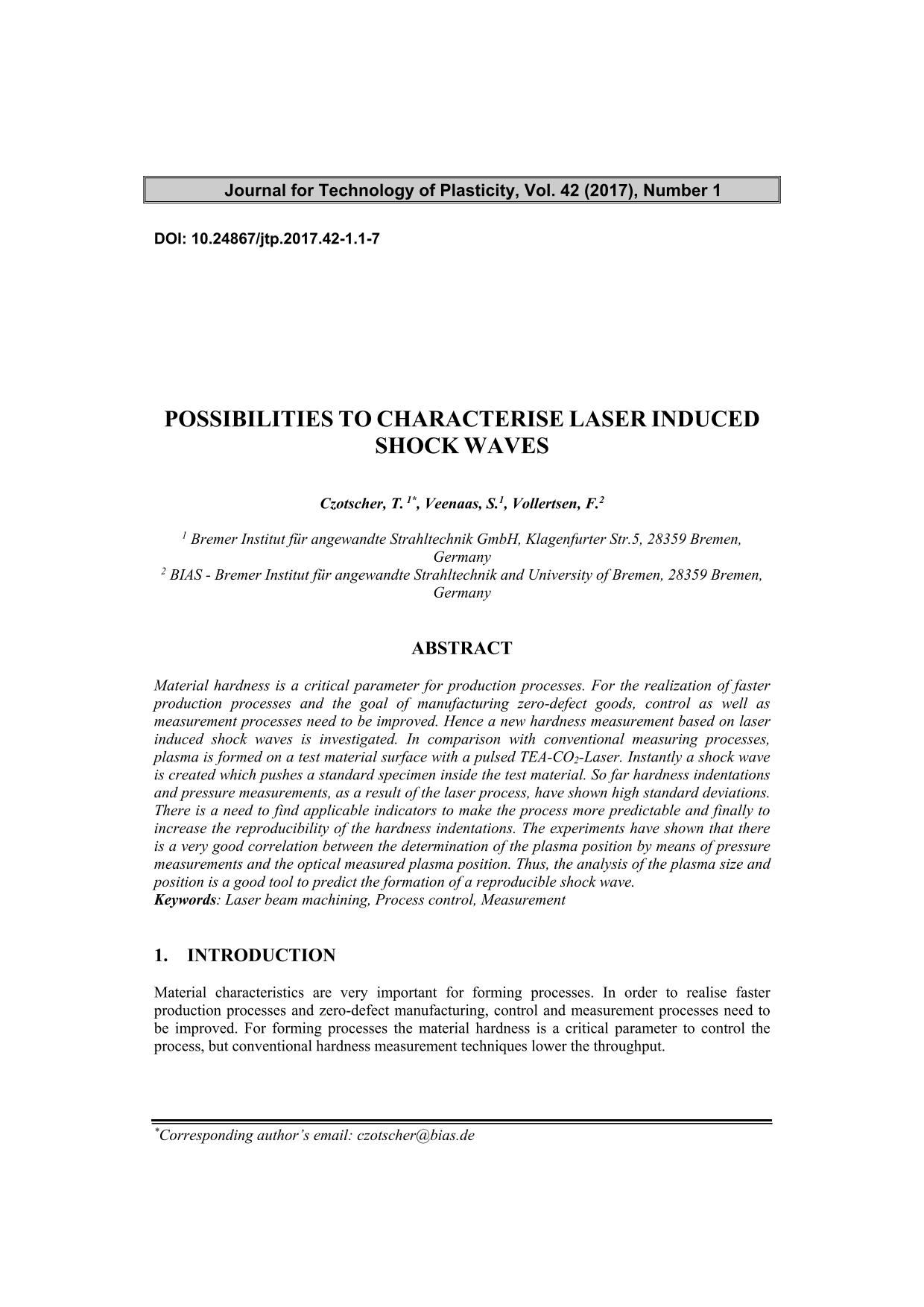
Published 2017-06-30
abstract views: 18 // Full text article (PDF): 0
Keywords
- Laser beam machining,
- Process control,
- Measurement
How to Cite

This work is licensed under a Creative Commons Attribution 4.0 International License.
Abstract
Material hardness is a critical parameter for production processes. For the realization of faster production processes and the goal of manufacturing zero-defect goods, control as well as measurement processes need to be improved. Hence a new hardness measurement based on laser induced shock waves is investigated. In comparison with conventional measuring processes, plasma is formed on a test material surface with a pulsed TEA-CO2-Laser. Instantly a shock wave is created which pushes a standard specimen inside the test material. So far hardness indentations and pressure measurements, as a result of the laser process, have shown high standard deviations. There is a need to find applicable indicators to make the process more predictable and finally to increase the reproducibility of the hardness indentations. The experiments have shown that there is a very good correlation between the determination of the plasma position by means of pressure measurements and the optical measured plasma position. Thus, the analysis of the plasma size and position is a good tool to predict the formation of a reproducible shock wave.

